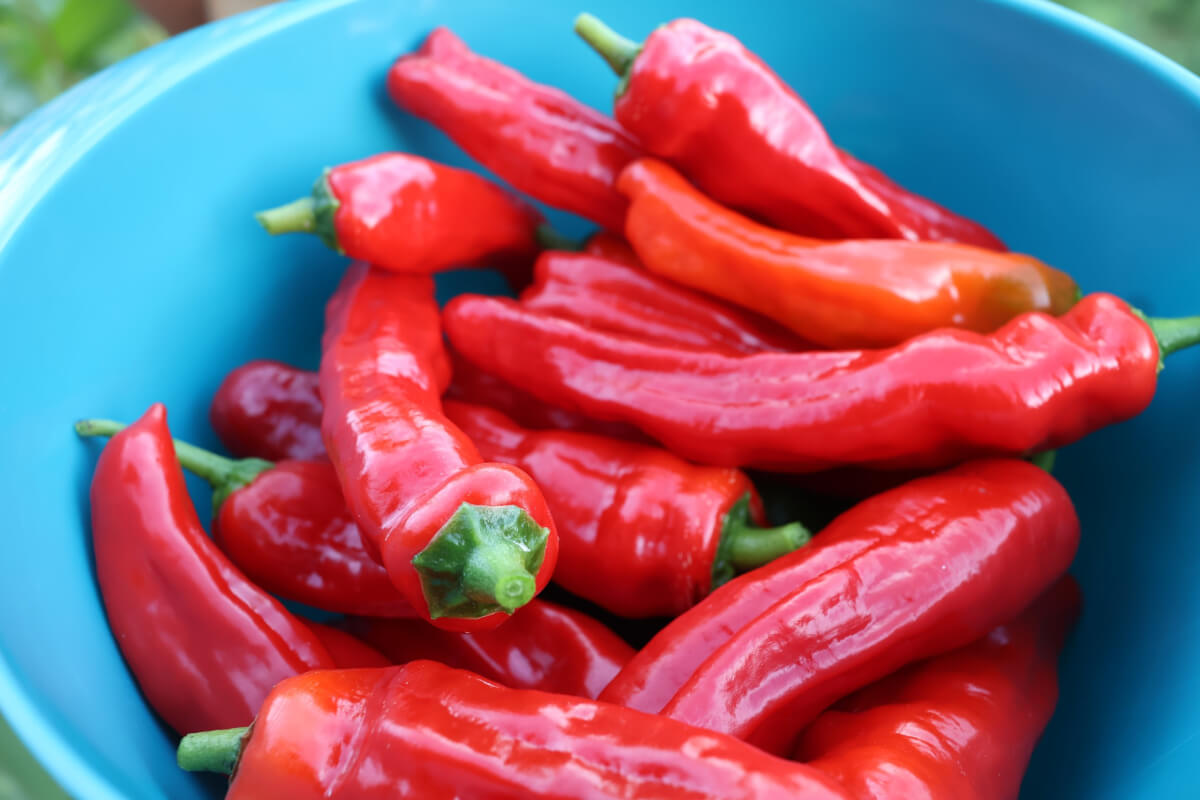I can’t remember if we mentioned these this year or not. But, even if we did, they are worth mentioning twice!
If you’ve ever tried to grow bell peppers at subarctic latitudes, you’ve likely been severely disappointed. The truth is, you’re lucky if you get more than one per plant and it’s also challenging to see them become their flavorful, ripe and colored versions of themselves. We’ve tried practically every “cold climate friendly” bell pepper variety out there and the story is always the same.
We were seriously looking for an “acceptable” sweet pepper that we could successfully grow when we came across Shishito peppers. Now, this was well before they became the popular peppers they are today, where you see them in lots of high end restaurants and such. We tried them out and they absolutely wow’d us. We fully understand why they command the commercial popularity that we’re seeing these days!
They are excellent when grilled on the barbeque and just served that way. But, even as a standalone sweet pepper, they are sweet, complex and full of tasty good pepper flavor. Today, we practically grow them as our bell pepper equivalent and they have performed admirably.
This has been a rather terrible pepper year for us. Sure, we’ve gotten things to pop off, but we know that some seasons are far and away better than this one. Between the cold run up into summer and not very much heat overall, this season hasn’t been great for peppers for us. Indoors or in the greenhouse.
You can see why they are most exemplary. Even in this “terrible” pepper year, the overwhelming majority of our peppers fully ripened. They were more prolific than any other kind of pepper we grew, by more than double!
P.S. There’s a genetic equivalent of Shishito called Padron peppers. They are basically the same genetics, but Padron originated in Mexico whereas Shishito are a Japanese variety. Both will perform similarly at higher latitudes!


